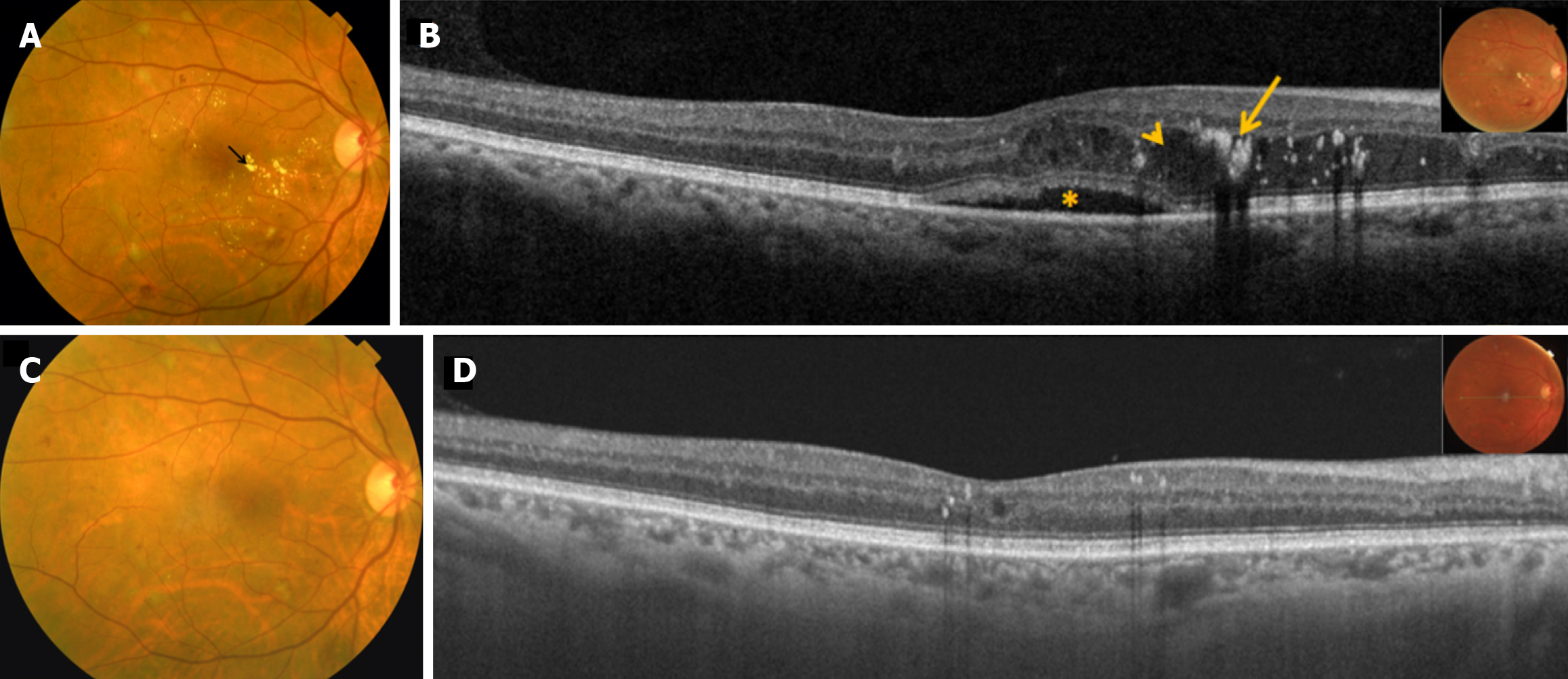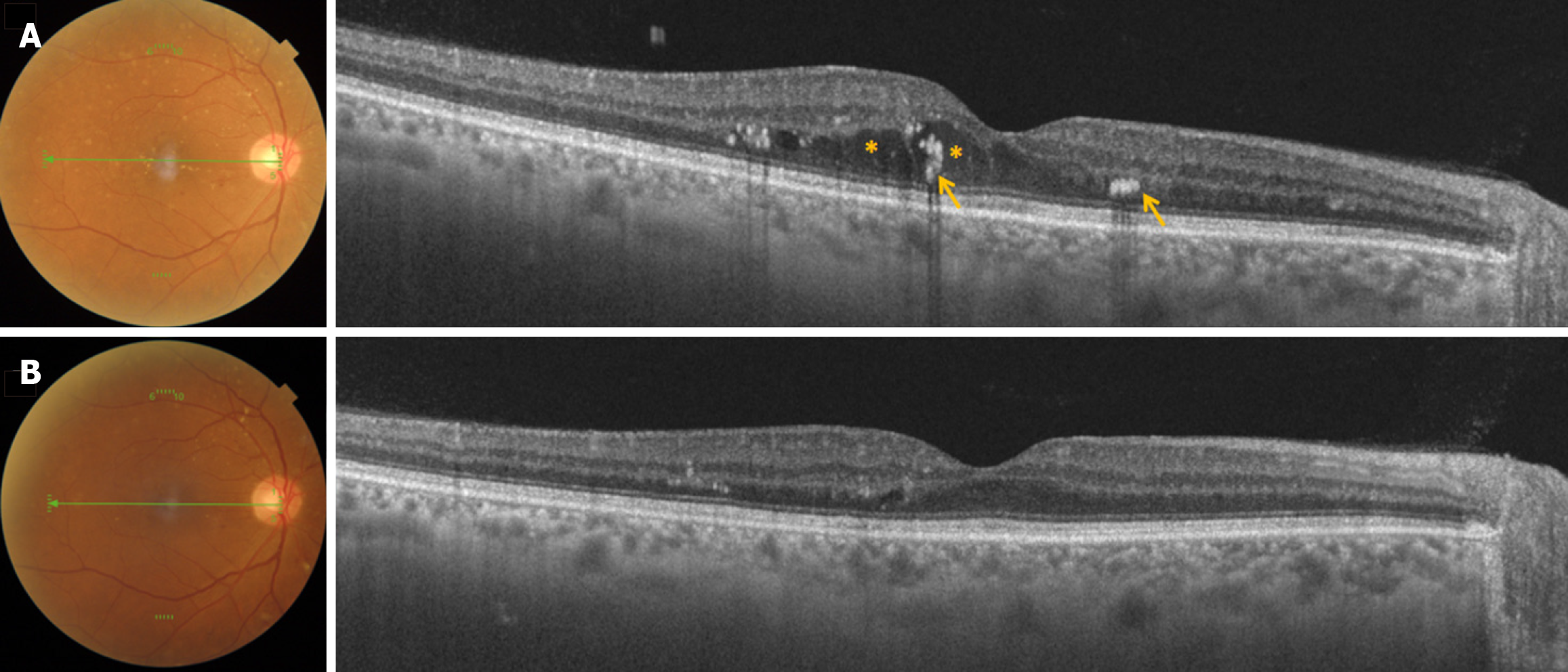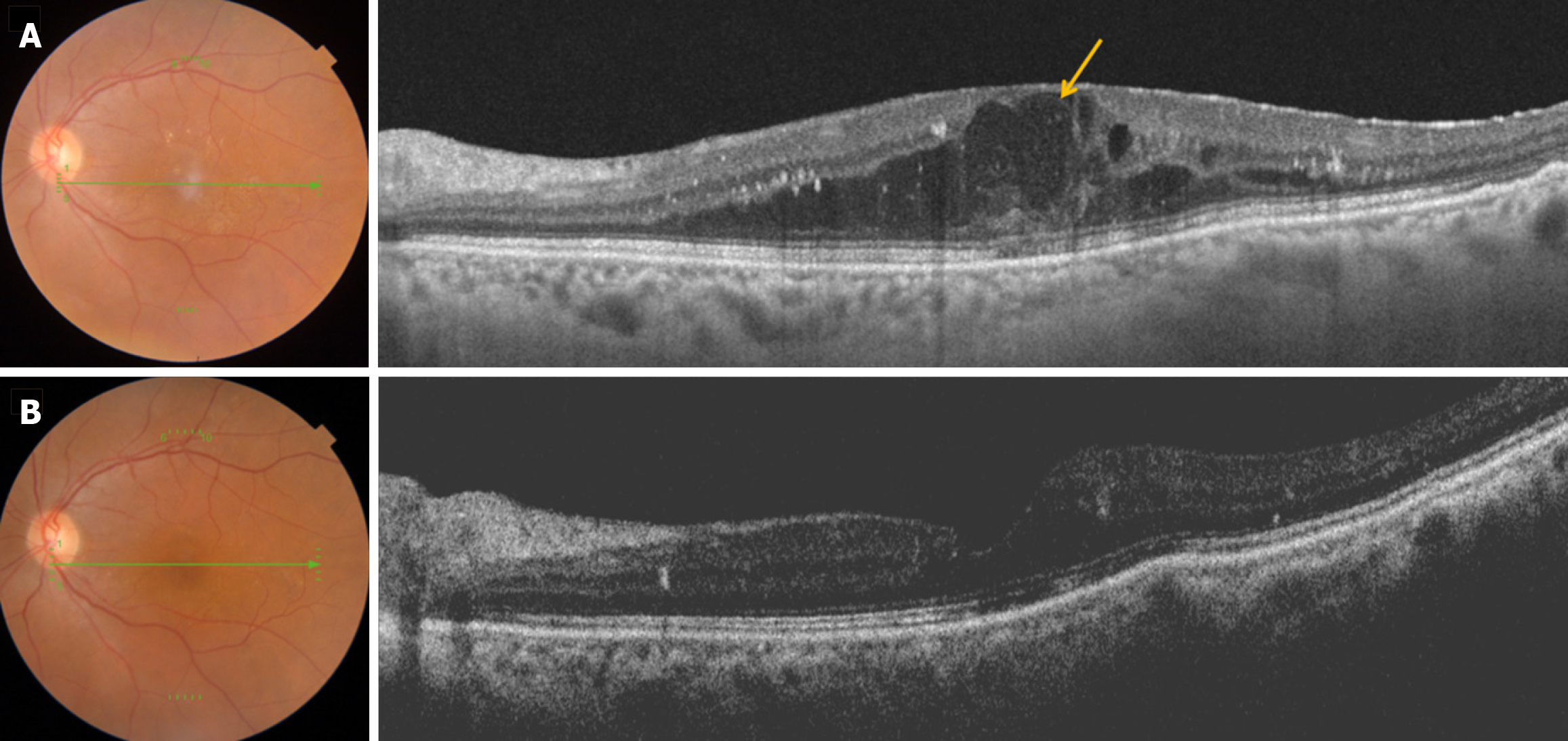Copyright
©The Author(s) 2024.
World J Exp Med. Dec 20, 2024; 14(4): 99235
Published online Dec 20, 2024. doi: 10.5493/wjem.v14.i4.99235
Published online Dec 20, 2024. doi: 10.5493/wjem.v14.i4.99235
Figure 1 Ranibizumab remains the first-line agent and the standard of care in the management of diabetic macular edema.
A: Fundus photograph of the right eye of a patient with moderate non-proliferative diabetic retinopathy shows retinal thickening and hard exudates (arrow) suggestive of clinically significant macular edema (CSME); B: Corresponding swept source optical coherence tomography scan shows intraretinal (arrow-head) and subretinal fluid (asterisk) along with hard exudates (arrow); C and D: Treatment with Intravitreal Ranibizumab (Accentrix®) resulted in resolution of CSME and improvement in visual acuity from 6/18 to 6/9.
Figure 2 A 55-year-old Asian Indian female presented with decreased vision in her right eye for the past two months.
She was diagnosed with type II diabetes mellitus 5 years back. A: She had moderate non-proliferative diabetic retinopathy with clinically significant macular edema (CSME) at presentation. Swept source optical coherence tomography scan showed the presence of intra-retinal cystic spaces (asterisk) and hard exudates (arrows); B: Treatment with intravitreal Aflibercept (Eylea®) resulted in the resolution of CSME.
Figure 3 A 65-year-old Asian Indian male presented with decreased vision in his left eye.
He was diagnosed with type II diabetes mellitus 2 years back. He also gave a history of myocardial infarction two months back. A: Fundus examination showed moderate non-proliferative diabetic retinopathy with clinically significant macular edema (CSME) in the left eye. Swept source optical coherence tomography scan showed presence of intra-retinal cystic spaces (arrow); B: Treatment with intravitreal dexamethasone implant (Ozurdex®) resulted in the resolution of CSME.
- Citation: Arora A, Morya AK, Gupta PC, Menia NK, Nishant P, Gupta V. Intravitreal therapy for the management of diabetic retinopathy: A concise review. World J Exp Med 2024; 14(4): 99235
- URL: https://www.wjgnet.com/2220-315x/full/v14/i4/99235.htm
- DOI: https://dx.doi.org/10.5493/wjem.v14.i4.99235















